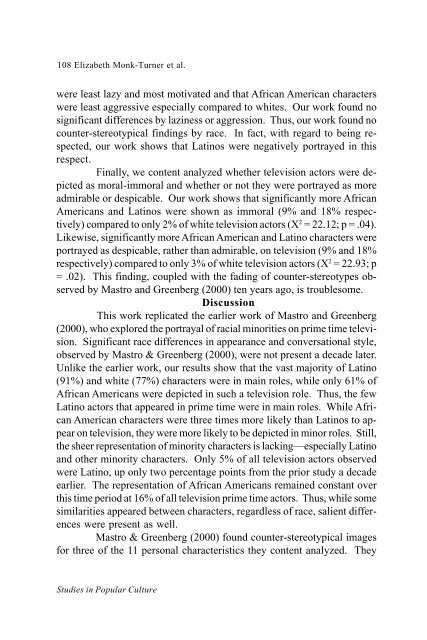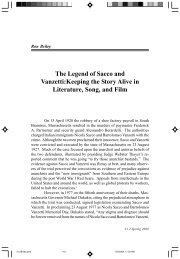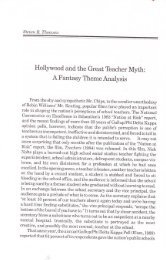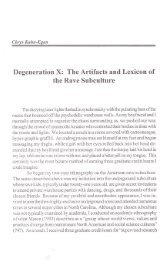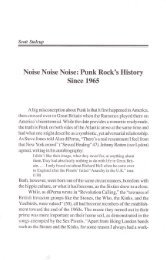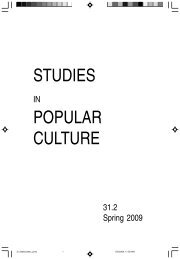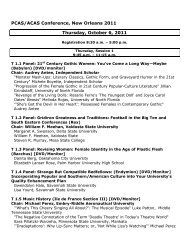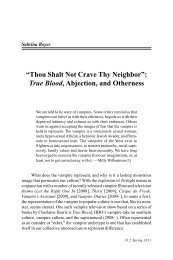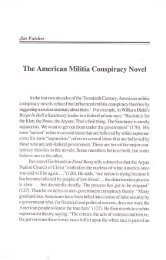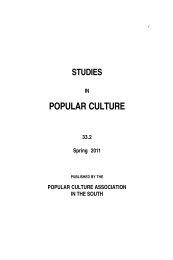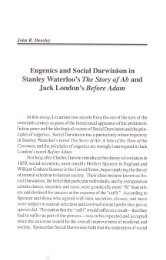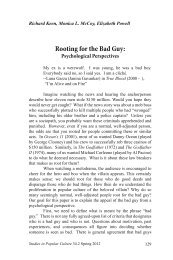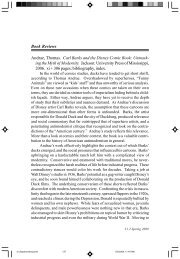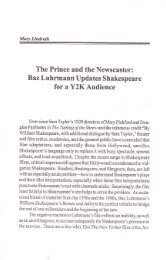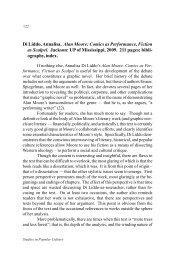The Portrayal of Racial Minorities on Prime Time Television: A ...
The Portrayal of Racial Minorities on Prime Time Television: A ...
The Portrayal of Racial Minorities on Prime Time Television: A ...
Create successful ePaper yourself
Turn your PDF publications into a flip-book with our unique Google optimized e-Paper software.
108 Elizabeth M<strong>on</strong>k-Turner et al.<br />
were least lazy and most motivated and that African American characters<br />
were least aggressive especially compared to whites. Our work found no<br />
significant differences by laziness or aggressi<strong>on</strong>. Thus, our work found no<br />
counter-stereotypical findings by race. In fact, with regard to being respected,<br />
our work shows that Latinos were negatively portrayed in this<br />
respect.<br />
Finally, we c<strong>on</strong>tent analyzed whether televisi<strong>on</strong> actors were depicted<br />
as moral-immoral and whether or not they were portrayed as more<br />
admirable or despicable. Our work shows that significantly more African<br />
Americans and Latinos were shown as immoral (9% and 18% respectively)<br />
compared to <strong>on</strong>ly 2% <str<strong>on</strong>g>of</str<strong>on</strong>g> white televisi<strong>on</strong> actors (X 2 = 22.12; p = .04).<br />
Likewise, significantly more African American and Latino characters were<br />
portrayed as despicable, rather than admirable, <strong>on</strong> televisi<strong>on</strong> (9% and 18%<br />
respectively) compared to <strong>on</strong>ly 3% <str<strong>on</strong>g>of</str<strong>on</strong>g> white televisi<strong>on</strong> actors (X 2 = 22.93; p<br />
= .02). This finding, coupled with the fading <str<strong>on</strong>g>of</str<strong>on</strong>g> counter-stereotypes observed<br />
by Mastro and Greenberg (2000) ten years ago, is troublesome.<br />
Discussi<strong>on</strong><br />
This work replicated the earlier work <str<strong>on</strong>g>of</str<strong>on</strong>g> Mastro and Greenberg<br />
(2000), who explored the portrayal <str<strong>on</strong>g>of</str<strong>on</strong>g> racial minorities <strong>on</strong> prime time televisi<strong>on</strong>.<br />
Significant race differences in appearance and c<strong>on</strong>versati<strong>on</strong>al style,<br />
observed by Mastro & Greenberg (2000), were not present a decade later.<br />
Unlike the earlier work, our results show that the vast majority <str<strong>on</strong>g>of</str<strong>on</strong>g> Latino<br />
(91%) and white (77%) characters were in main roles, while <strong>on</strong>ly 61% <str<strong>on</strong>g>of</str<strong>on</strong>g><br />
African Americans were depicted in such a televisi<strong>on</strong> role. Thus, the few<br />
Latino actors that appeared in prime time were in main roles. While African<br />
American characters were three times more likely than Latinos to appear<br />
<strong>on</strong> televisi<strong>on</strong>, they were more likely to be depicted in minor roles. Still,<br />
the sheer representati<strong>on</strong> <str<strong>on</strong>g>of</str<strong>on</strong>g> minority characters is lacking—especially Latino<br />
and other minority characters. Only 5% <str<strong>on</strong>g>of</str<strong>on</strong>g> all televisi<strong>on</strong> actors observed<br />
were Latino, up <strong>on</strong>ly two percentage points from the prior study a decade<br />
earlier. <str<strong>on</strong>g>The</str<strong>on</strong>g> representati<strong>on</strong> <str<strong>on</strong>g>of</str<strong>on</strong>g> African Americans remained c<strong>on</strong>stant over<br />
this time period at 16% <str<strong>on</strong>g>of</str<strong>on</strong>g> all televisi<strong>on</strong> prime time actors. Thus, while some<br />
similarities appeared between characters, regardless <str<strong>on</strong>g>of</str<strong>on</strong>g> race, salient differences<br />
were present as well.<br />
Mastro & Greenberg (2000) found counter-stereotypical images<br />
for three <str<strong>on</strong>g>of</str<strong>on</strong>g> the 11 pers<strong>on</strong>al characteristics they c<strong>on</strong>tent analyzed. <str<strong>on</strong>g>The</str<strong>on</strong>g>y<br />
Studies in Popular Culture


